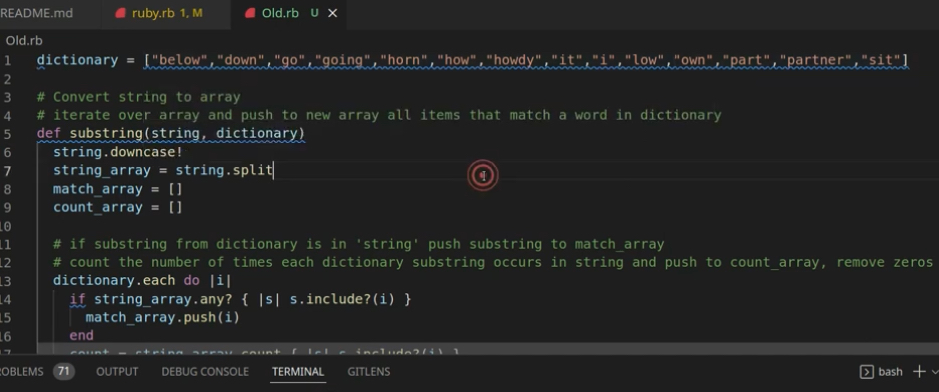In the hushed halls of the recent Ruby conference, seasoned developers and eager novices alike gathered to tackle an age-old challenge: optimizing Ruby code execution. This was no ordinary meeting; it was a gathering of the brightest minds, each armed with unique insights and time-tested techniques. Let me take you on a journey through the highlights of this enlightening event, where the secrets of Ruby performance were laid bare.
The Call of the Code: Why Optimization Matters
Before we delve into the intricate strategies discussed, it’s essential to understand why optimizing Ruby code is crucial. Ruby, with its elegant and readable syntax, is a joy to work with. However, its dynamic nature can sometimes lead to performance bottlenecks. In today’s fast-paced world, where every millisecond counts, optimizing your Ruby code can lead to significant improvements in application performance, user experience, and cost efficiency.
Key Benefits of Ruby Optimization
- Improved Performance: Faster execution of code translates to more responsive applications.
- Cost Efficiency: Reduced resource usage can lead to lower infrastructure costs.
- Scalability: Optimized code can handle increased loads more effectively, ensuring your application can grow with your user base.
The Grand Conclave: Highlights from the Conference
The conference was a goldmine of information. Here are some of the standout strategies shared by the experts:
1. Profiling: The First Step in Optimization
The journey to optimization begins with understanding where your code spends its time. Profiling tools like ruby-prof and stackprof were highlighted for their ability to provide detailed insights into your code’s performance. Profiling helps identify slow parts of your application, guiding you on where to focus your optimization efforts.
2. Benchmarking: Measure and Conquer
Accurate measurement is crucial in optimization. The speakers emphasized the importance of benchmarking different parts of your code to understand their performance characteristics. By running benchmarks multiple times and comparing them against a baseline, you can make informed decisions about where to make improvements.
3. The Magic of Memoization
Memoization is a simple yet powerful technique that involves caching the results of expensive function calls. This can drastically reduce execution time for functions that are called repeatedly with the same arguments. The concept is straightforward: store the result of a function the first time it is called, and return the cached result on subsequent calls.
4. Garbage Collection Tuning
Ruby’s garbage collector (GC) plays a vital role in managing memory, but it can also become a performance bottleneck. Experts shared tips on tuning the GC, such as adjusting heap growth factors and malloc limits, and even using alternative memory allocators like jemalloc, to improve performance.
5. Native Extensions and C-Extensions
For those parts of your code that require the utmost performance, writing critical sections in C can provide significant speedups. The Foreign Function Interface (FFI) library allows you to call C code from Ruby, blending the ease of Ruby with the speed of C.
6. Concurrency and Parallelism
Although Ruby’s Global Interpreter Lock (GIL) can limit the effectiveness of threading, there are ways to achieve concurrency and parallelism. Tools like the concurrent-ruby gem provide modern concurrency primitives, while process forking can enable truly parallel execution, bypassing the limitations of the GIL.
7. Just-In-Time (JIT) Compilation
Introduced in Ruby 2.6, the Method-based Just-In-Time (MJIT) compiler can boost performance by compiling Ruby code into native machine code at runtime. Enabling JIT can lead to significant performance gains for CPU-bound applications.
8. Database Query Optimization
Databases are often the bottleneck in application performance. Techniques such as eager loading, proper indexing, and query optimization were discussed. Eager loading helps avoid the N+1 query problem, while indexing ensures that database searches are fast and efficient.
9. Efficient Data Structures
Choosing the right data structure is crucial for performance. Using hashes and sets for fast lookups, arrays for ordered collections, and more advanced structures like tries or heaps can significantly impact the speed of your application.
10. Code Reviews and Refactoring
Continuous code reviews and regular refactoring are vital to maintaining optimal performance. Fresh perspectives can identify inefficiencies, while refactoring can streamline and simplify complex code, making it more efficient and easier to maintain.
The Community Connection: Learning from Each Other
One of the most enriching aspects of the conference was the sense of community. Ruby developers, regardless of their level of expertise, were eager to share their experiences, successes, and even their failures. This culture of openness and collaboration is what drives innovation and improvement within the Ruby ecosystem.
Peer Reviews and Pair Programming
Peer reviews and pair programming were highlighted as powerful methods to enhance code quality and performance. By working closely with others, developers can gain new perspectives, spot potential issues earlier, and learn new techniques that they might not have considered on their own.
Case Studies and Success Stories
Several sessions featured detailed case studies where companies and developers shared their optimization journeys. These stories were not just about the technical changes made but also about the processes, challenges, and lessons learned along the way.
Key Takeaways from the Case Studies:
- Incremental Improvement: Optimization is often a gradual process. Small, continuous improvements can lead to significant gains over time.
- Holistic Approach: Effective optimization considers the entire stack, from the database to the front-end, and everything in between.
- Testing and Validation: Rigorous testing is essential to ensure that optimizations do not introduce bugs or regressions.
Tools and Resources: Enhancing Your Ruby Toolkit
Throughout the conference, various tools and resources were mentioned that can assist in the optimization process. Here are a few that stood out:
Profiling and Benchmarking Tools
- ruby-prof: A robust profiling tool that offers a variety of measurement modes, including wall time, CPU time, and memory usage.
- stackprof: Ideal for sampling the call stack at regular intervals, providing insights into where your program spends most of its time.
- Benchmark Module: A built-in Ruby library that allows for easy benchmarking of code snippets.
Memory Management Tools
- derailed_benchmarks: Helps in tracking memory usage and identifying memory bloat.
- GC Tracer: Provides detailed information about Ruby’s garbage collection process.
Concurrency Tools
- concurrent-ruby: A gem that provides modern concurrency tools, including thread pools, actors, and promises.
- Sidekiq: A background processing tool that can help offload tasks from your main application flow.
The Road Ahead: Embracing Continuous Learning
The conference was a reminder that optimization is not a one-time task but an ongoing journey. As Ruby evolves, so too must our approaches to writing efficient and effective code. Here are a few ways to stay on top of optimization best practices:
Join Ruby Communities
Participating in online forums, local meetups, and conferences can keep you connected with the latest trends and techniques in Ruby optimization.
Follow Influential Rubyists
Many Ruby experts share their insights and discoveries through blogs, social media, and talks. Following them can provide valuable information and inspiration.
Experiment and Share
Don’t be afraid to try new things. Experiment with different optimization techniques in your projects and share your findings with the community. Your experiences could help others in their own optimization journeys.


